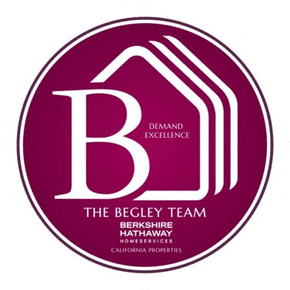 During the past several years, as folks struggled to survive the economic downturn and job loss, many smart people turned to entrepreneurship. In fact, working for yourself, either part-time or as your full-time gig is the reality for millions of Americans. Additionally, many companies turned to hiring freelance or contract labor (1099 status) rather than fully employed workers (W-2 status) in order to cut costs and reduce both overhead and employment expenses such as benefits, labor insurances and employment taxes.
During the past several years, as folks struggled to survive the economic downturn and job loss, many smart people turned to entrepreneurship. In fact, working for yourself, either part-time or as your full-time gig is the reality for millions of Americans. Additionally, many companies turned to hiring freelance or contract labor (1099 status) rather than fully employed workers (W-2 status) in order to cut costs and reduce both overhead and employment expenses such as benefits, labor insurances and employment taxes.
While many of us returned to regular full-time employment since the economy started improving, a large segment of the population continue to earn income through self-employment, free-lance or contract work, enjoying the freedom from dress codes, specific work hours and income limitations of regular jobs. Additionally, as “business owners,” self-employed taxpayers qualify for a whole host of tax breaks that reduce their bottom line and consequently, their provable income. The freedom is great, but how do you qualify for a mortgage?
Since the mortgage industry bases credit-worthiness on provable income, using W-2 forms and tax returns, qualifying for a conventional loan may prove difficult for many self-employed would-be homeowners.
Conventional lenders
Since conventional lenders follow prescribed formulas in proving income and credit-worthiness, most mortgage underwriters only look at the after-tax and post-deduction income, resulting in a far lower provable income than most entrepreneurs or self-employed workers believe expresses the reality of their situation. In a few cases, certain lenders allow specific deductions to be added back into your income including some one-time investment expenses, depletion or deductions for business use of your home. But for the most part, qualifying for a conventional loan is much more difficult for the self-employed buyer with an irregular income.
Alternative lenders
While a conventional loan (salable to government-controlled agencies such as FannieMae and FreddieMac) may not be an option for you, some investors see an opportunity and are funding smaller lenders that offer loans outside these restrictions. For these loans, the risk is higher, so to hedge their investment, these loans typically have a higher interest rate and require a down-payment of at least 20 percent and sometimes more, or a large portfolio, or really great credit.
The bottom line
If you’re newer at the self-employed lifestyle but know you want to buy a home in the near future, you’ll need to start now to position yourself to qualify. Here are the best practices to incorporate into your business and personal life to set yourself up to be approved:
- Be organized: Keeping organized and accurate business and financial records supports your income claims. Most lenders will request a couple years (or more) of tax returns to prove your average monthly income. If your first year was low (this is true for most), give yourself three years or more to back up your income claims. Lenders take the net income from two years and divide it by 24 to get an average, so if in your first year you had only two or three sporadic clients and now you have 10 or 12 regular clients, that additional year will allow you to increase the verifiable income your lender uses.
- Keep track of your earnings: Use an accounting system that can give you earnings or revenue statements, expense reports, profit and loss statements and a balance sheet. If you’re looking for simple workable accounting systems, a couple to check out include QuickBooks online and Freshbooks. Either of these systems is created for the non-accountant give you access to a variety reports, support and useful information.
- Work to improve your credit score: Your credit score may seem out of your control—after all, some companies only report your bad habits and not your good ones—but there are some areas you can take charge of. Your payment history makes up more than a third of your score. Position yourself to make payments early and on time. Another thirty percent of your score is based on the amount you owe compared to the amount of credit you already have, and other loans such as school and vehicle loans. That means if you have a credit card with $5,000 available and only owe $250 on it, you’re at just 5% of your available credit and you’ll receive more points in this area, but if you have a credit card with $500 on it and you owe $250, you’re at 50% of your available credit, so expect that scenario to negatively impact your score. In other words, pay off what you already owe. The rest of your score is a mixture of the length of your credit history, new credit accounts and the mixture of types of accounts you have. Contrary to some popular practices, closing your oldest accounts when you open new ones is a bad idea. The older accounts that are in good standing offer you more points than a newer account.
- Report your payments: If you don’t currently use credit (i.e. have no loans or credit cards), but you consistently pay your bills like rent, electricity, insurance or subscriptions, consider utilizing one of the alternative reporting services to prove you make your payments on time and consistently.
Don’t wait until you want to buy a house to start getting your financial house in order. If may take several months to up to two years to create a provable paper trail for yourself.
Compliments of Brandon Begley | The Begley Team | Berkshire Hathaway California Properties | (818) 368-0290 | www.BegleyTeam.com
Over 1,500 Homes Sold Since 1975!
 By submitting information, I am providing my express written consent to be contacted by representatives of this website through a live agent, artificial or prerecorded voice, and automated SMS text at my residential or cellular number, dialed manually or by autodialer, by email, and mail.
By submitting information, I am providing my express written consent to be contacted by representatives of this website through a live agent, artificial or prerecorded voice, and automated SMS text at my residential or cellular number, dialed manually or by autodialer, by email, and mail.

